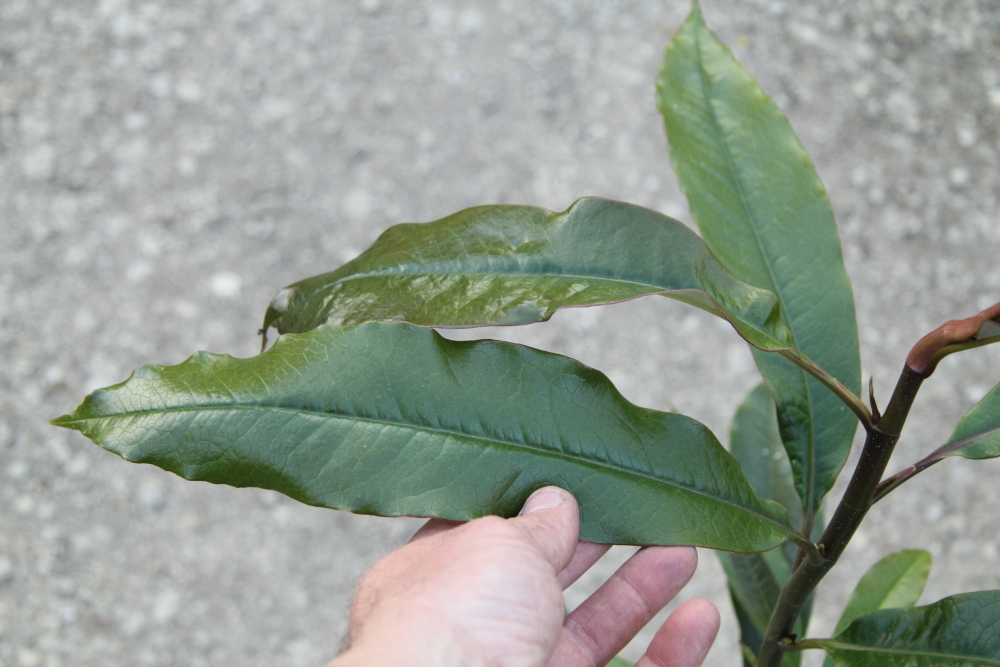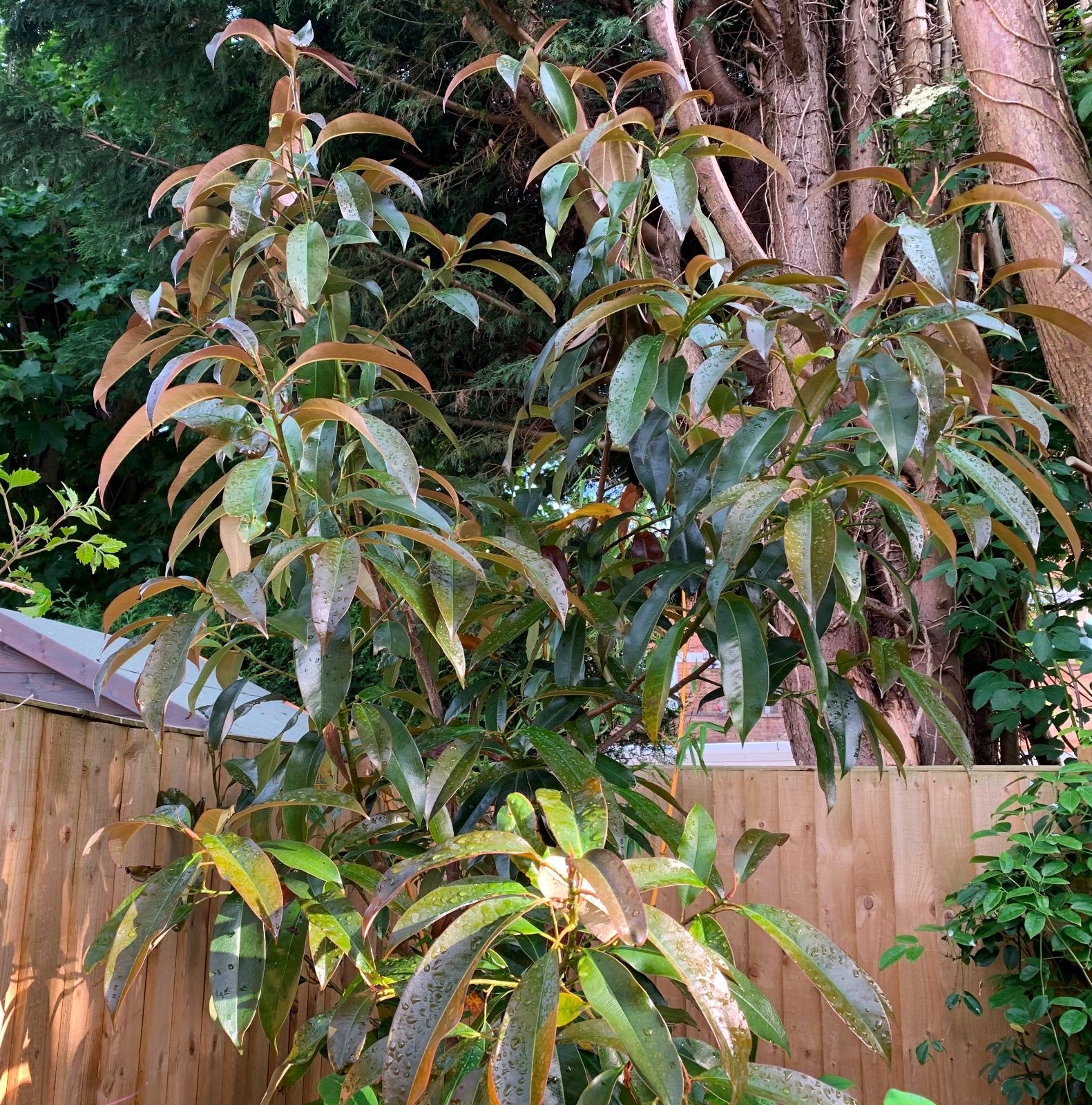Magnolia caveana
Sponsor
Kindly sponsored by
The Roy Overland Charitable Trust

Credits
Richard B. Figlar & Julian Sutton (2022)
Recommended citation
Figlar, R.B. & Sutton, J. (2022), 'Magnolia caveana' from the website Trees and Shrubs Online (treesandshrubsonline.
Genus
- Magnolia
- Section Manglietia
Synonyms
- Magnolia tibetica V.S. Kumar
- Manglietia caveana Hook.f. & Thoms.
- Manglietia microtricha Y.W. Law
- Manglietia tenuifolia Hung T. Chang & B.L. Chen
Other taxa in genus
- Magnolia acuminata
- Magnolia × alba
- Magnolia amabilis
- Magnolia amoena
- Magnolia aromatica
- Magnolia biondii
- Magnolia × brooklynensis
- Magnolia campbellii
- Magnolia cathcartii
- Magnolia cavaleriei
- Magnolia champaca
- Magnolia changhungtana
- Magnolia chapensis
- Magnolia compressa
- Magnolia conifera
- Magnolia Cultivars A
- Magnolia Cultivars B
- Magnolia Cultivars C
- Magnolia Cultivars D
- Magnolia Cultivars E
- Magnolia Cultivars F
- Magnolia Cultivars G
- Magnolia Cultivars H–I
- Magnolia Cultivars J
- Magnolia Cultivars K
- Magnolia Cultivars L
- Magnolia Cultivars M
- Magnolia Cultivars N–O
- Magnolia Cultivars P
- Magnolia Cultivars Q–R
- Magnolia Cultivars S
- Magnolia Cultivars T
- Magnolia Cultivars U–V
- Magnolia Cultivars W–Z
- Magnolia cylindrica
- Magnolia dandyi
- Magnolia dawsoniana
- Magnolia de Vos and Kosar hybrids
- Magnolia decidua
- Magnolia delavayi
- Magnolia denudata
- Magnolia doltsopa
- Magnolia duclouxii
- Magnolia ernestii
- Magnolia figo
- Magnolia floribunda
- Magnolia × foggii
- Magnolia fordiana
- Magnolia foveolata
- Magnolia fraseri
- Magnolia fulva
- Magnolia globosa
- Magnolia × gotoburgensis
- Magnolia grandiflora
- Magnolia grandis
- Magnolia Gresham hybrids
- Magnolia guangdongensis
- Magnolia hookeri
- Magnolia insignis
- Magnolia Jury hybrids
- Magnolia × kewensis
- Magnolia kobus
- Magnolia kwangtungensis
- Magnolia laevifolia
- Magnolia lanuginosa
- Magnolia leveilleana
- Magnolia liliiflora
- Magnolia × loebneri
- Magnolia lotungensis
- Magnolia macclurei
- Magnolia macrophylla
- Magnolia martini
- Magnolia maudiae
- Magnolia nitida
- Magnolia obovata
- Magnolia officinalis
- Magnolia opipara
- Magnolia × proctoriana
- Magnolia × pruhoniciana
- Magnolia rostrata
- Magnolia salicifolia
- Magnolia sapaensis
- Magnolia sargentiana
- Magnolia sieboldii
- Magnolia sinensis
- Magnolia sinica
- Magnolia sinostellata
- Magnolia × soulangeana
- Magnolia sprengeri
- Magnolia stellata
- Magnolia tamaulipana
- Magnolia × thomsoniana
- Magnolia tripetala
- Magnolia × veitchii
- Magnolia virginiana
- Magnolia × wieseneri
- Magnolia wilsonii
- Magnolia xinganensis
- Magnolia yunnanensis
- Magnolia yuyuanensis
- Magnolia zenii
Large evergreen tree to 30–40 m tall, 40–60 cm dbh; young branchlets stout, becoming dark purplish, 5–10 mm diameter; buds covered with copper- or ginger-coloured pubescence, all other parts of the plant glabrous. Leaves often produced in false-whorls at branch tips, leathery, glossy dark green above, pale greyish beneath, obovate to elliptic or elliptic-oblong, (13–)17–25 × 5–7(–9) cm; base cuneate, apex shortly acuminate; midrib impressed above, secondary veins 13–17 pairs, reticulation distinct both sides; petioles 2–3 cm long, stipular scar 40–80% the length of the petiole. Flowers ~10 cm across when open flat, tepals 9–12, outer 3 sometimes tinged red outside, inner tepals white and slight smaller than outer tepals. Fruits ovoid, red when ripe, 6–9 cm long; carpels narrowly elliptic with apices short-beaked to 3 mm; fruiting peduncle ~1–2 cm long. Fruiting Sep-Oct (China). (Xia, Liu & Nooteboom 2008; Chen & Nooteboom 1993; King 1891).
Distribution Myanmar China Xizang, Yunnan India Assam, Arunachal Pradesh, Meghalaya, Nagaland, Manipur
Habitat Evergreen broadleaf forests, 1400–2400 m.
USDA Hardiness Zone 9
RHS Hardiness Rating H3
Conservation status Data deficient (DD)
Still very much an experimental prospect for the mildest parts of our area, the evergreen foliage of this manglietia, flushed bronze when young, and its ginger-hairy terminal buds are proving attractive.
Magnolia caveana has a wide range in the Sino-Himalayan region. It was first described from the Indian end of the range during the colonial period (Hooker & Thomson 1855); the specific epithet commemorates G.N. Cave, a British army officer and ‘indefatigable horticulturalist’ (Hooker 1854) whose field knowledge helped Hooker’s botanical explorations. Nick Macer’s 2013 collections from Manipur, India at around 2,000 m (NJM 13.037 and 13.044) were initially thought to be the first introduction to the West; seedlings have been offered in Europe by Pan-Global Plants (2021). Plants from this collection at Tregrehan have not yet flowered (T. Hudson pers. comm. 2022). However, an earlier introduction by Tom Hudson from the Yunnan/Myanmar border, previously thought to represent M. conifera var. chingii, has since been provisionally identified as M. caveana. Plants from that collection are growing very well and flowering in Cornwall. One of several at Tregrehan, planted in 1995, had reached 11 m × 87 cm by 2014; another from this stock at Caerhays Castle measured 10 m × 79 cm in 2016 (The Tree Register 2021). Just how widely this species can be grown on the Atlantic fringe of Europe, in the American Southeast and Pacific Northwest remains to be seen.




